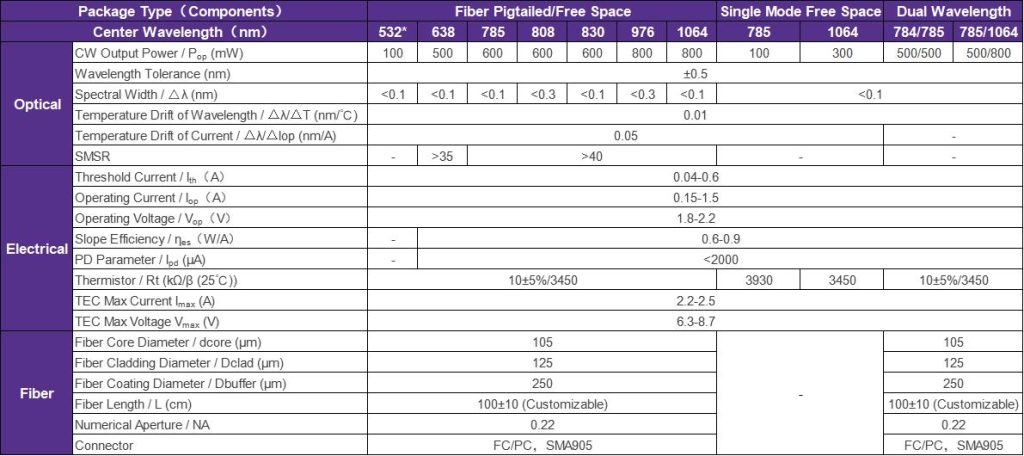Application of Narrow Linewidth Lasers in Raman Spectroscopy
Narrow linewidth lasers play a crucial role in Raman spectroscopy for medical applications, primarily by providing high-quality, highly stable laser sources that enhance the performance and accuracy of Raman spectrometers in medical diagnostics, biological sample analysis, and other areas. Key applications of narrow linewidth lasers in Raman spectroscopy for medical use include the following:
I. Advantages of Narrow linewidth Laser Sources
High Spectral Purity: Narrow linewidth lasers produce laser light with an extremely narrow spectral bandwidth, reducing background noise and interference in spectral measurements, which significantly improves the accuracy and resolution of spectral analysis.
Wavelength Stabilized: These lasers offer exceptional wavelength stability, maintaining consistent output even when subjected to changes in external conditions, such as temperature fluctuations. This stability is especially important for Raman spectroscopy, where precise wavelength control is required.
High Output Power: Some narrow linewidth lasers are capable of providing high output power, meeting the intensity demands of Raman spectroscopy and improving both signal strength and signal-to-noise ratio.
The specifications are shown as follows:

Figure 1

Figure 2
II. Applications in the Medical Field
Disease Diagnosis: By combining Raman spectrometers with narrow linewidth lasers, non-invasive, rapid spectral analysis of biological tissues can be performed, helping to identify diseased tissues or abnormal cells. This technique shows potential for early cancer detection, dermatological diagnosis, and more.
Pharmaceutical Analysis: During drug research and production, narrow linewidth lasers serve as the light source for Raman spectrometers to analyze the chemical composition, structure, and purity of drugs, ensuring product quality and safety.
Biological Sample Detection: Raman spectroscopy can also be used to detect specific molecules or compounds in biological samples, such as proteins, nucleic acids, and other biomolecules. The high stability and resolution of narrow linewidth lasers make this type of detection more accurate and reliable.
The application prospects for narrow linewidth lasers in medical Raman spectroscopy are vast. As technology continues to advance and costs decrease, RealLight’s narrow linewidth lasers are well-positioned to meet the diverse needs of the industry.
Disclaimer: Some of the content in this article is sourced from the internet for the purpose of technical research and exchange. It is provided for reference and learning. If any descriptions are incorrect or academic errors are found, please feel free to point them out. If there are any copyright issues, please contact us for verification and removal.


